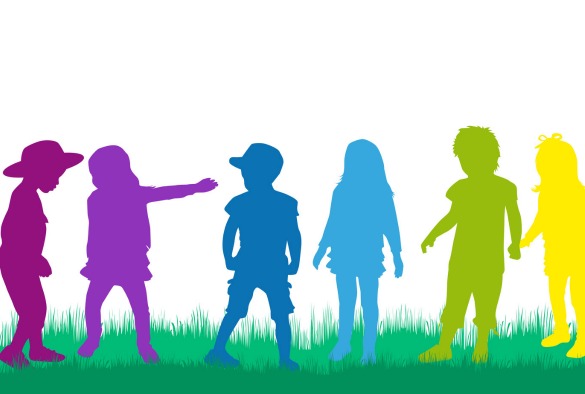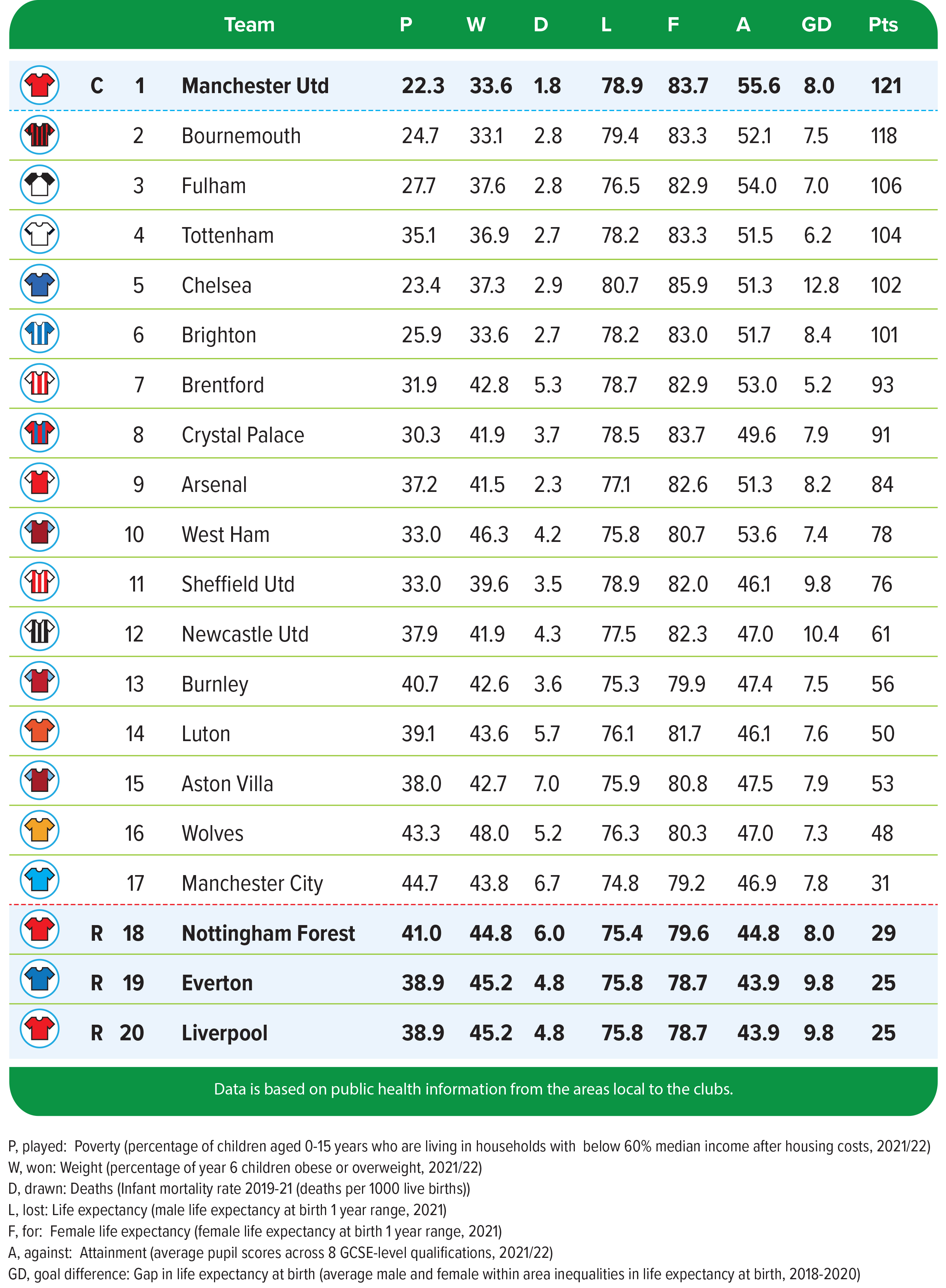
A league table ranking child health by football team area has further shown the dramatic health divide between the North and the South.
Ahead of the new football season later this month, researchers at Health Equity North (HEN) including Professor David Taylor-Robinson, Public Health and Policy at the University of Liverpool, analysed data to create a visual representation of how children from different areas of the country fare across a range of childhood health indicators.
The rankings, based on public health information from the areas local to the clubs, look at: poverty; obesity; infant mortality rate; life expectancy at birth; educational attainment; and the gap in life expectancy.
Presented in the form of a football league table featuring the 20 men’s Premier League teams, the results – ranked from best to worst -demonstrate the extent of disparities in health across the country.
The top half of the table, showing the best performing regions, is dominated by southern clubs and the ‘relegated clubs’ are from the Midlands and the North West.
Manchester United – based in Trafford, an area of affluence in the North West – would win the Child Health and Wellbeing League, followed by Bournemouth, Fulham and Tottenham in the top four European places, with Chelsea in fifth, Brighton in sixth and Brentford in seventh place.
The bottom three in the table, who would all be relegated, are Nottingham Forest, Everton and Liverpool.
The league table also shines a spotlight on the health inequalities that exist within towns and cities. While Manchester United win the league, their neighbours Manchester City are almost relegated. Children are 50% less likely to grow up in poverty (22.3%) on the red side of Greater Manchester than on the blue side (44.7%).
There are also high inequalities in life chances within local authorities – there is an almost 13-year gap in life expectancy for babies born in the most and least deprived areas of Kensington and Chelsea. Similarly, in Newcastle, the gap in life expectancy at birth is over 10 years.
Liverpool and Nottingham have some of the worst health and wellbeing outcomes in the country. The infant mortality rate in Nottingham is over three times higher (6 deaths per 1,000 live births) than Trafford’s (1.8 per 1,000 live births).
Life expectancy is almost five years higher for baby boys (80.7 years) and over seven years higher for baby girls (85.9 years) born in Kensington and Chelsea than for baby boys (75.8 years) and baby girls (78.7 years) born in Liverpool.

Professor David Taylor-Robinson, Professor of Public Health and Policy at the University of Liverpool, HEN Academic Director, and co-author of the research, said: “Many aspects of child health and wellbeing are worse in the UK compared to other rich countries. As a country we rank 27th for child health according to UNICEF, nowhere near the Premier League. One of the main reasons for this is that we have scored own goals with our policies for children, particularly regarding child poverty. But fortunately, there’s nothing inevitable about this situation, and with new management strategy fortunes can change overnight.”
The league table lead has been published by the new virtual institute Health Equity North. HEN brings together world-renowned academics who have a unique understanding of their regional communities to lead the creation of research and place-based policy solutions that address public health problems and health inequalities across the North of England.
A recent report from HEN academics and the All-Party Parliamentary Group Child of the North found that children in the North are some of the least protected from the current cost of living crisis.
Recommendations from HEN academics include:
- increasing child benefit by up to £20/week; increasing the child element of universal credit; suspending the two-child limit
- expanding provision of free-school meals
- increased investment in welfare, health and social care systems that support children’s health, particularly in deprived areas, reversing the cuts that have hit disadvantaged areas in the North the hardest.
- a joined-up strategy to tackle health inequalities, putting children’s health and wellbeing at the heart of policy.
View the Child Health and Wellbeing League results and a blog on the analysis from the HEN Academic Directors here www.healthequitynorth.co.uk/blog-which-football-team-wins-the-child-health-and-wellbeing-league/